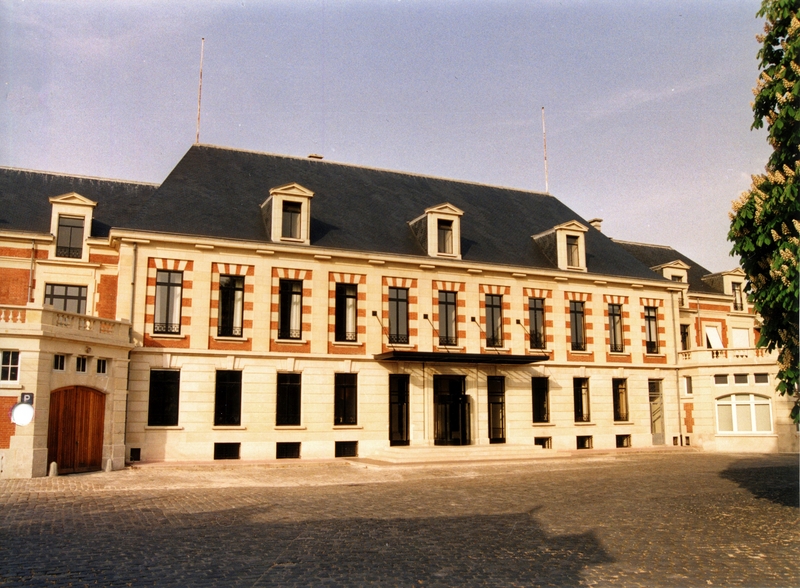Introduction
Veuve Clicquot is not just a name; it’s a symbol of luxury, resilience, and innovation. The story of Veuve Clicquot is one of a widow who defied the odds in a male-dominated industry and transformed a small Champagne house into one of the most prestigious brands in the world. From the invention of the riddling table to the creation of the first vintage Champagne, Veuve Clicquot’s legacy is marked by a commitment to quality and a passion for perfection.
The Origins of Veuve Clicquot
The origins of Veuve Clicquot trace back to 1772 when it was founded by Philippe Clicquot-Muiron in Reims, France. Initially named Clicquot-Muiron et Fils, the house started as a small vineyard, producing high-quality wines for local consumption. Philippe Clicquot had a vision to expand the business beyond France, a bold move during a time when the Champagne region was not yet globally recognized for its sparkling wines.
However, it was Philippe’s son, François Clicquot, who truly began to steer the company toward greatness. François married Barbe-Nicole Ponsardin in 1798, and together they sought to elevate the reputation of their Champagne. Unfortunately, François died prematurely in 1805, leaving the business in the hands of his 27-year-old widow, Barbe-Nicole.
The Widow Clicquot: A Pioneer in Champagne
Barbe-Nicole, now known as Veuve Clicquot (veuve meaning widow in French), was faced with the daunting task of managing the business in an industry dominated by men. Despite the immense challenges, she was determined to succeed. She took over the company and became one of the first women to lead a Champagne house.
Under her leadership, Veuve Clicquot became synonymous with quality and innovation. One of her most significant contributions to the Champagne industry was the development of the riddling process, a technique that revolutionized the production of sparkling wine.
The Riddling Table: A Revolutionary Invention
In the early 19th century, one of the biggest challenges in Champagne production was dealing with the sediment that formed in the bottles during the secondary fermentation process. This sediment, made up of dead yeast cells, would cloud the wine and was difficult to remove without losing the precious bubbles.
Determined to find a solution, Madame Clicquot invented the riddling table in 1816. This simple yet ingenious device allowed bottles to be placed at an angle and rotated periodically, causing the sediment to collect at the neck of the bottle. Once the sediment was concentrated, it could be easily removed by freezing the neck of the bottle and expelling the sediment plug, a process known as disgorgement.
The riddling table significantly improved the clarity and quality of Champagne, setting Veuve Clicquot apart from its competitors. This invention not only enhanced the product but also increased the efficiency of production, allowing Veuve Clicquot to scale up and meet growing demand.
The First Vintage Champagne
Another groundbreaking achievement under Madame Clicquot’s leadership was the creation of the first vintage Champagne in 1810. Until then, Champagne was typically blended from multiple years’ harvests to ensure consistency in flavor. However, Madame Clicquot recognized the potential of certain exceptional harvests to produce a wine that could stand on its own.
By labeling the Champagne with the year of the harvest, she created the concept of vintage Champagne, which celebrated the unique characteristics of a particular year. This innovation not only added prestige to the brand but also established a new category within the Champagne industry, further solidifying Veuve Clicquot’s reputation as a pioneer.
Expanding the Brand: The Russian Market
Veuve Clicquot’s success in the early 19th century was also bolstered by its expansion into international markets, particularly Russia. Despite the Napoleonic Wars, which disrupted trade across Europe, Madame Clicquot saw an opportunity to introduce her Champagne to the Russian aristocracy.
In 1814, she managed to smuggle a shipment of Veuve Clicquot Champagne to Russia just as the country was emerging from the turmoil of war. The Russian nobility quickly fell in love with the Champagne, especially the sweeter demi-sec style that was popular at the time. Veuve Clicquot became the Champagne of choice for Russian tsars and nobility, solidifying its status as a luxury brand.
This bold move not only established a strong foothold in Russia but also opened the door to other international markets. Veuve Clicquot’s reputation spread across Europe, and the brand became synonymous with elegance and sophistication.
The Yellow Label: A Symbol of Excellence
One of the most recognizable aspects of Veuve Clicquot is its distinctive yellow label, which has become an iconic symbol of the brand. Introduced in 1877, the yellow label was a departure from the traditional white or cream labels used by other Champagne houses.
The choice of yellow was bold and innovative, reflecting the vibrant and dynamic spirit of the brand. It also made Veuve Clicquot Champagne instantly recognizable on store shelves and in the cellars of fine dining establishments. The yellow label has since become synonymous with quality and luxury, embodying the brand’s commitment to excellence.
The Modern Era: Maintaining Tradition and Embracing Innovation
After Madame Clicquot’s death in 1866, the company continued to thrive, thanks to the strong foundation she had built. Veuve Clicquot remained in the hands of her descendants until 1986 when it was acquired by the luxury goods conglomerate Louis Vuitton Moët Hennessy (LVMH).
Under LVMH’s ownership, Veuve Clicquot has continued to honor its rich heritage while embracing modern innovations. The brand has expanded its portfolio to include a range of Champagne styles, from the classic Brut Yellow Label to the prestigious La Grande Dame, named in honor of Madame Clicquot herself.
Veuve Clicquot has also embraced sustainability, with initiatives aimed at reducing its environmental impact. The company has implemented eco-friendly practices in its vineyards, production facilities, and packaging, ensuring that its Champagne is produced with respect for the environment.
Veuve Clicquot Today: A Global Icon
Today, Veuve Clicquot is one of the most recognizable and respected Champagne brands in the world. Its Champagne is enjoyed by connoisseurs and celebrities alike, and it is a staple at high-profile events, from film festivals to royal weddings.
The brand’s commitment to innovation continues, with Veuve Clicquot constantly exploring new ways to enhance the Champagne experience. This includes the development of new blends, limited-edition releases, and creative collaborations with artists and designers.
Conclusion: The Enduring Legacy of Veuve Clicquot
The story of Veuve Clicquot is a testament to the power of innovation, perseverance, and excellence. From its humble beginnings in the vineyards of Reims to its status as a global luxury brand, Veuve Clicquot has always been at the forefront of the Champagne industry.
Madame Clicquot’s vision and determination laid the foundation for a legacy that has endured for over two centuries. Her inventions, such as the riddling table and vintage Champagne, revolutionized the industry and set new standards for quality. Today, Veuve Clicquot continues to honor her legacy by producing Champagne that embodies the same spirit of innovation and excellence.
As we raise a glass of Veuve Clicquot, we celebrate not only the Champagne itself but also the remarkable woman who made it all possible. Madame Clicquot’s story is one of courage, ingenuity, and a relentless pursuit of perfection—a story that continues to inspire and captivate us to this day.
𐡸 𐡸 𐡸 𐡸 𐫱 𐡷 𐡷 𐡷 𐡷
Frequently asked questions
The yellow label on Veuve Clicquot Champagne, introduced in 1877, is a symbol of the brand’s vibrant and dynamic spirit. It was a bold departure from the traditional labels used by other Champagne houses and has since become an iconic identifier of Veuve Clicquot’s commitment to quality and luxury.
The Widow Clicquot, or Madame Barbe-Nicole Clicquot, was the pioneering woman who took over the Veuve Clicquot Champagne house after her husband’s death in 1805. She is important because she revolutionized the Champagne industry with innovations like the riddling table and the creation of vintage Champagne, transforming Veuve Clicquot into a world-renowned brand.
The riddling process, invented by Madame Clicquot, is a technique used to remove sediment from Champagne bottles during the secondary fermentation process. Bottles are placed at an angle and rotated periodically, causing the sediment to collect at the neck, where it can be easily removed through disgorgement, resulting in clear, high-quality Champagne.
Veuve Clicquot’s vintage Champagne is special because it is made from grapes harvested in a single exceptional year, unlike non-vintage Champagne, which is a blend of multiple years. Vintage Champagne highlights the unique characteristics of that year’s harvest and is often more complex and refined.
Veuve Clicquot has embraced sustainability through various initiatives aimed at reducing its environmental impact. These include eco-friendly practices in vineyards, such as reducing pesticide use and promoting biodiversity



